Habitats of Arizona
Part of what makes Arizona an exceptional birding destination is the diverse landscapes found throughout the state. From the desert grasslands of the border region to Alpine forests in the state’s north mountains, Arizona offers a rich mosaic of unique habitats that attract birds and other wildlife year-round.
Desert
Three of the four North American deserts are found in Arizona, the Sonoran Desert, the Mohave Desert, and the Chihuahuan Desert. Although all three share characteristics typical of the desert environment—they’re all hot and dry for much of the year—each desert has a unique set of physical characteristics with distinct suites of plants and animals. As a result, this habitat group contributes significantly to Arizona’s exceptionally high biodiversity.
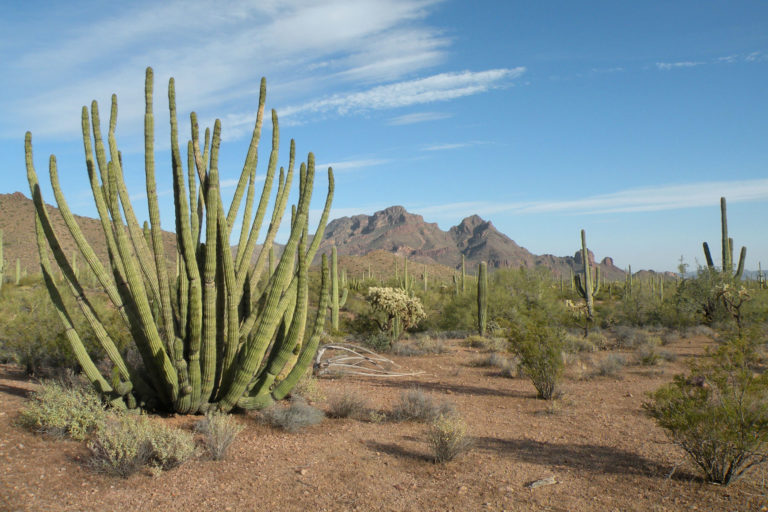
Sonoran Desertscrub
Perhaps the most biodiverse of all North American deserts, Sonoran Desertscrub is broken into two distinct regions, the Upland Sonoran Desert and Lower Sonoran Desert. Upland is characterized by a variety of cacti, including cholla, organ pipe cactus, and the iconic giant saguaro. Other typical plants include palo verde, ironwood, and creosote. In Lower Sonoran Desertscrub, cacti are present but not nearly as abundant as its counterpart. Lower Sonoran Desertscrub is also characterized by sprawling, flat valley floors, while Upper Sonoran Desertscrub offers more varied topography. Both types of desert have a typical climate consisting of hot, dry summers and mild winters with precipitation occurring in a bimodal pattern with two “wet” periods between July—September and December—February. The Sonoran Desert surrounds the metropolitan areas of Phoenix and Tucson.
About 500 bird species, 20 amphibians, 100 reptiles, and 30 species of native fish make their home in the Sonoran Desert for at least a portion of their life cycle. In addition, an estimated 2,000 species of plants and more than 200 species of native bees also occupy the Sonoran Desert region. Some avian highlights include Costa’s hummingbird, Gila woodpecker, gilded flicker, ferruginous (cactus) pygmy-owl, elf owl, cactus wren, pyrrhuloxia, greater roadrunner, Gambel’s quail, phainopepla, lesser nighthawk, and vermillion flycatcher.

Mohave Desertscrub
Grassland
North America’s central grasslands are considered some of the most threatened ecosystems in the world. In Arizona, grasslands have played a significant role in our state’s history by being quite valuable both ecologically as well as economically. Arizona’s grasslands are intertwined with the state’s rich ranching and farming history, as these habitats provide sprawling lands for livestock forage. However, these habitats are also under enormous pressure today. The lack of regular fires, high grazing pressure, and extended drought conditions, have led to shrub encroachment in some areas and desertification in others. Arizona hosts two grasslands types, the semidesert grasslands of the southern and northwest portions of the state, as well as the plains and great basin grasslands found in the state’s northern regions.

Semidesert Grassland
Semidesert grasslands are characterized by short-grasses, such as grama grass, and interspersed with small trees and shrubs, cacti, agave, and yucca. Climate includes hot summers and warm winters with annual rainfall less than 10 inches, making them the driest of grassland types in North America. Semidesert grasslands dominate much of the Chihuahuan Desert in southeast Arizona, however these dry grasslands also occur in the state’s northwest region near Kingman. Some avian highlights of the semidesert grassland habitats include Aplomado Falcon, Grasshopper Sparrow, Black-throated Sparrow, Pyrrhuloxia, Western Meadowlark, Swainson’s Hawk, Loggerhead Shrike, Western Burrowing Owl, Cactus Ferruginous Pygmy-owl, and Northern Masked Bobwhite.
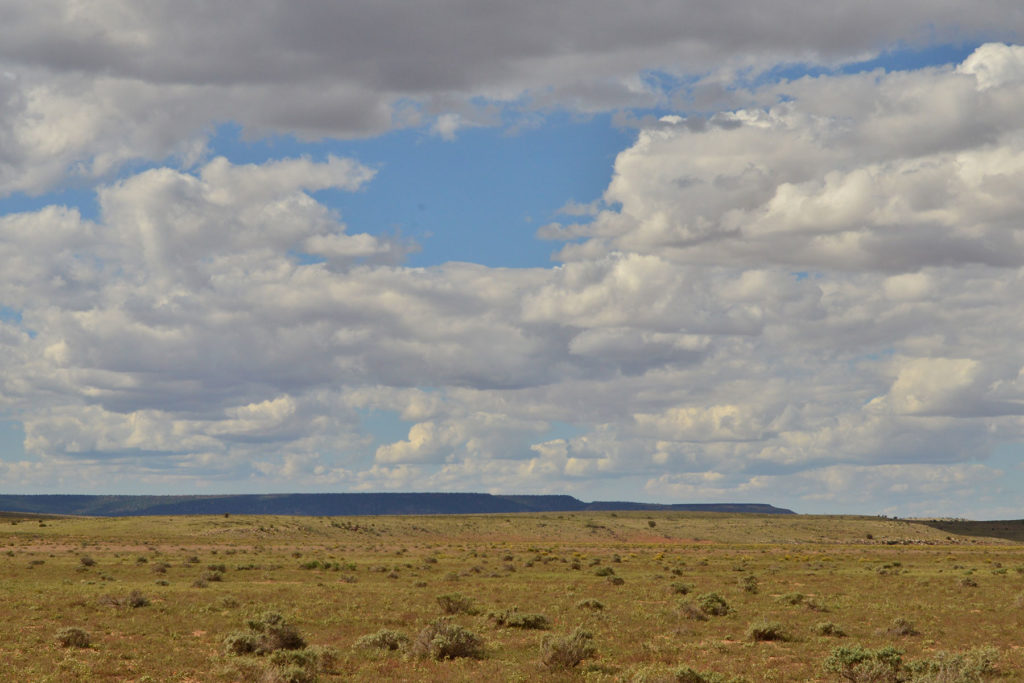
Plains and Great Basin Grassland
Plains and Great Basin Grasslands are found in northeast portions of the state along the Arizona/New Mexico Plateau region east of Flagstaff as well as the area north of the Grand Canyon on the Kaibab Plateau. Grama grasses are abundant here, as are buffalo-grass, and alkali sacaton. This habitat type receives an average of 17 inches of precipitation annually, the majority of which falls in the spring and summer. Some highlights of the plains and great basin grasslands include Ferruginous Hawk, Western Burrowing Owl, Long-eared Owl, Arizona Woodpecker, Golden Eagle, Mountain Plover, Peregrine Falcon, Prairie Falcon, Swainson’s Hawk, and Western Yellow-Billed Cuckoo.
Forest and Woodland
A variety of forest and woodland habitats are found throughout Arizona and greatly contribute to our state’s biodiversity. In the southern reaches, forest and woodland habitats are usually found in montane regions. Known as the “Sky Islands” these critical high-elevation areas act as important refuges from the sometimes searing heat on the desert floor below. They are also preferred habitats for many of the neotropical migrants who breed in Arizona. In the more temperate regions north of Phoenix, a variety of forest and woodland habitats dominate the landscape from the Mogollon Rim to the “Arizona Strip,” the area north of the Grand Canyon. Arizona is home to four main types of forest and woodland habitats, including chaparral, Madrean evergreen woodland, Great Basin conifer, and montane conifer forest. Each has their own unique attributes and suite of avian visitors.

Chaparral
Chaparral habitats are typically dense, low-growing thickets dominated by manzanita, acacia, juniper, and live oak. Most chaparral is found in mountainous areas south of the Mogollon Rim in central Arizona. Found in elevations ranging from 3,000. to 7,000 ft. above sea level, chaparral gets up to 14 inches of rain depending on elevation. While most precipitation occurs during the winter months, chaparral does see some rain during the monsoon season in July and August. Some highlights of the chaparral habitats include northern Goshawk, Sprague’s Pipit, Golden Eagle, American Bittern, Ferruginous Hawk, Gilded Flicker, Broad-billed Hummingbird, Magnificent Hummingbird, Desert Purple Martin, Pacific Wren, and Thick-billed Kingbird.

Madrean Evergreen Woodland
Madrean oak woodlands dominate the Sky Islands region of southern Arizona. The disparate mountain ranges act as islands in the sky, offering much needed high elevation, cooler environments compared to the hot desert floor below. As a result, these habitats host some of the highest biodiversity in the state. Dominated by oak and juniper trees, Madrean woodlands are found in mountain ranges such as the Dragoons, Santa Catalina, Santa Ritas, and Chiricahua mountains in southern Arizona. These high-elevation, lush habitats offer world-class birding. Some highlights of the Madream woodlands include Mexican Jay, Montezuma Quail, Arizona Woodpecker, Whiskered Screech-owl, Band-tailed Pigeon, Elegant Trogon, Mexican Spotted-owl, and Red-faced Warbler.

Great Basin Conifer
These evergreen woodlands are found north of the Mogollon Rim and are dominated by juniper and pinyon-pine species and are some of the most recognizable landscapes in Arizona. Offering temperate and pleasant summer temperatures, these habitats are cold and wind-swept during the winter months. These high elevation woodlands have been significantly affected by changing fire regimes, livestock grazing, drought, and invasive grass species. Some notable birds found in this habitat type are Gray Flycatcher, Pinyon Jay, Juniper Titmouse, Gray Vireo, Black-throated Gray Warbler, and Scott’s Oriole.
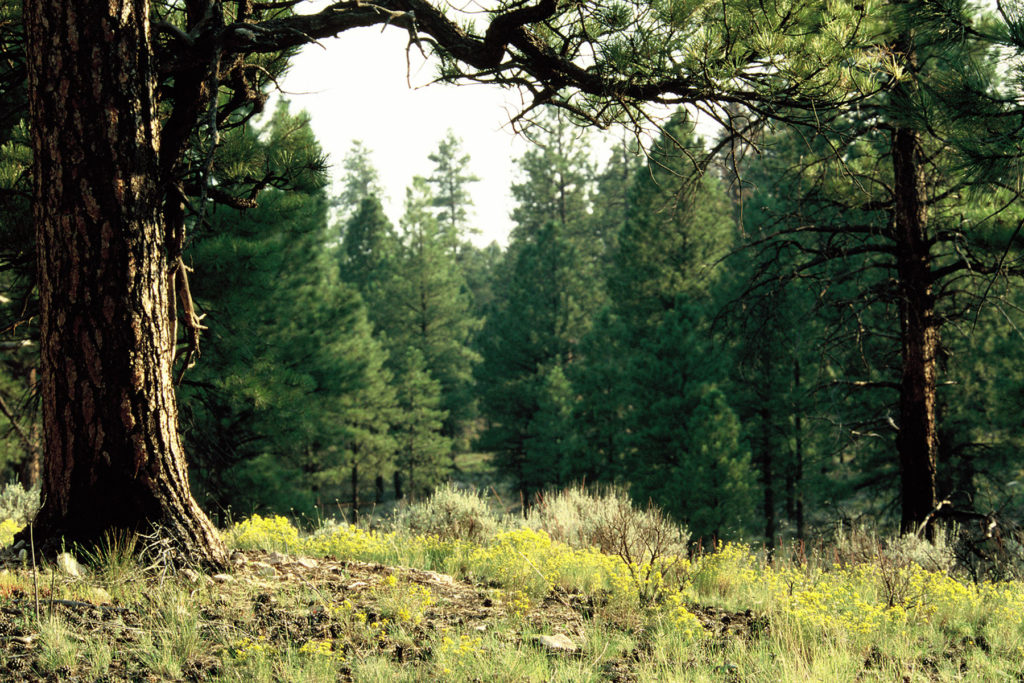
Sky Islands
Arizona has beautiful mountains throughout the state but Southeast Arizona has mountain ranges known as “Sky Islands” that stand out. Western Mexico has a large chain of mountain ranges over 700 miles long known as the Sierra Madre that is similar in concept to the Rocky Mountains in the US. The furthest north mountain ranges within the Sierra Madre system are in Southeast Arizona and include the Santa Rita Mountains, Santa Catalina Mountains, Huachuca Mountains and Chiricahua Mountains. This geographical association with mountain ranges in Mexico creates an ecological extension of plants and animals into the US that are normally associated with Mexico. The birds and other animals literally “island hop” between mountain ranges over the US/Mexico border. These high elevation “sky islands” surrounded by a “sea” of grassland and desert create pockets of forest habitat and lush canyons that are home to some of the most iconic birds of Arizona. Elegant Trogons, Sulphur-bellied Flycatchers, Red-faced Warblers, Rivoli’s Hummingbirds and mammals such as White-nosed Coati are just a few of the amazing animals that you may encounter in Southeast Arizona’s Sky Islands.
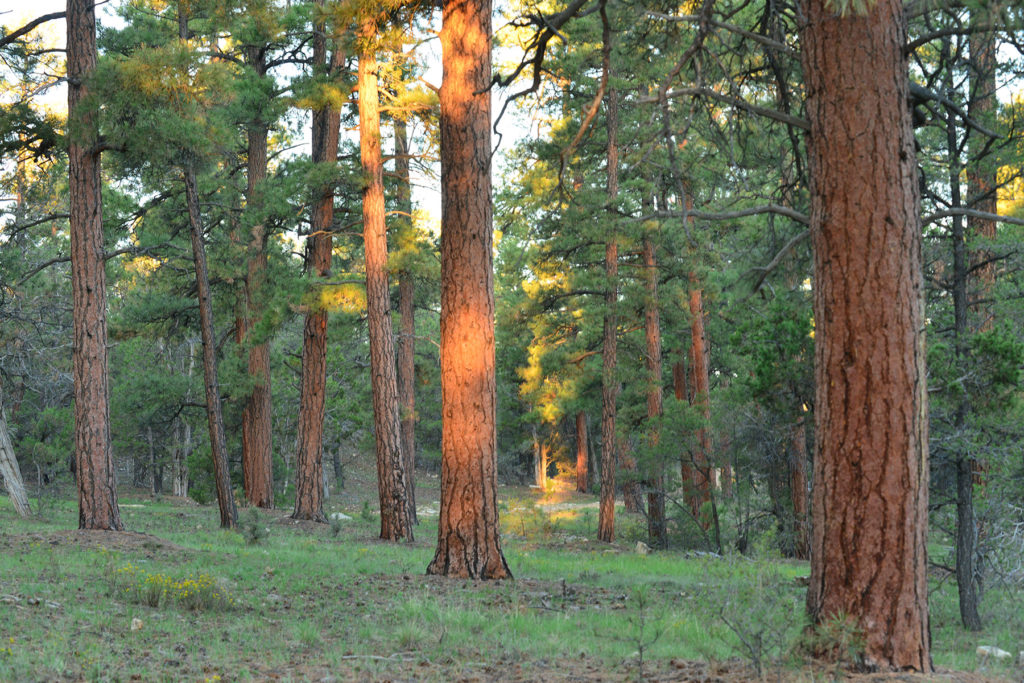
Montane Conifer Forest
Montane conifer forests are found on the largest of the Sky Island mountain ranges and are dominated by ponderosa pine along with Douglas fir and white fir. Other tree species include limber pine, southwestern white pine, Gambel oak, silverleaf oak, bigtooth maple, and quaking aspen. These towering forest stands create wide open, park-like understories allowing for the growth of grasses, forbes, and shrubs. Although found in some of the Sky Islands in southern Arizona, Montane conifer forest dominate much of the Mogollon Rim in central Arizona. Some avian highlights in this habitat include Flammulated Owl, Mexican Spotted Owl, Northern Pygmy-owl, Northern Goshawk, Dusky Grouse, Band-tailed Pigeon, Bald Eagle, Pine Grosbeak, Red Crossbill, and Red-faced Warbler
Rivers, Lakes, and Wetlands
Although occupying only approximately 0.3% of the total surface area of the state, aquatic systems such as rivers, lakes, and wetlands play an outsized role in supporting the biodiversity of Arizona’s wildlife. Many of our state’s wildlife species, especially birds, rely on these habitats for at least a portion of their life cycle. Unfortunately, all of these critical systems are under threat from a variety of forces, including climate change, groundwater pumping, invasive species, and poor agricultural practices.
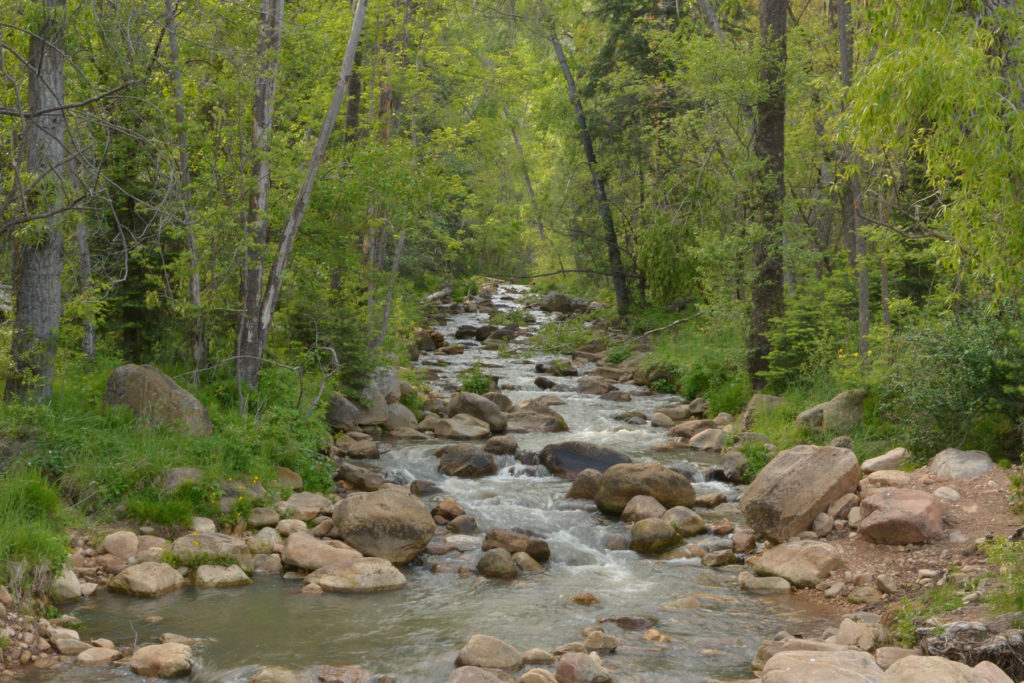
Riparian
Throughout Arizona, rivers and streams are rare and they are perhaps the most threatened—and important—habitat type in the state. These systems play an especially important role for wildlife by providing sheltering habitats, movement corridors, and of course critical resources like water. Although Arizona hosts few rivers, they do vary quite a bit in size, from the mighty Colorado River that carved the Grand Canyon, to medium-sized waterways like the Verde, Salt, and Gila rivers in central Arizona. In the south, fragile desert rivers like the San Pedro River and Santa Cruz River possess areas of perennial surface water along with towering stands of cottonwood and willow trees, creating superhighways for wildlife of all kinds who rely on these riparian areas for resources. Regardless of size, all of these waterways provide exceptional birding opportunities throughout the state. Some species highlights for this habitat include Yellow-billed Cuckoo, California Black Rail, Yuma Ridgway’s Rail, Least Bittern, Southwestern Willow Flycatcher, Blue-throated Mountain-gem, Elegant Trogon, American Dipper, Bald Eagle, Peregrine Falcon, Golden Eagle, MacGillivray’s Warbler, Red-faced Warbler, and Osprey.
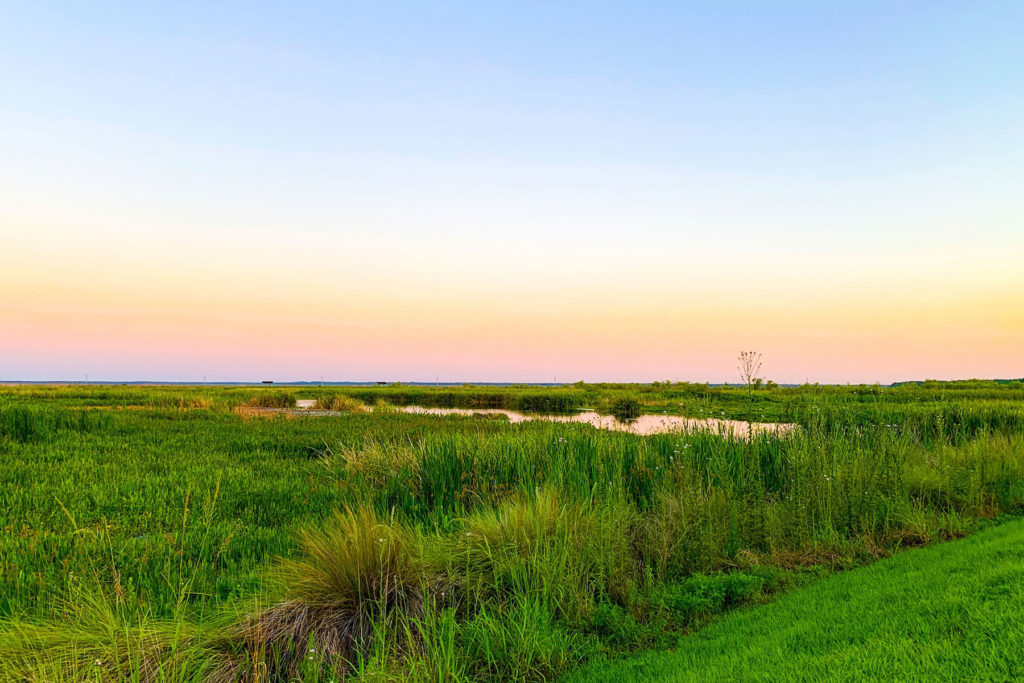
Wetlands and Springs
Wetlands and springs are two other vital aquatic systems that help support birds and other wildlife in Arizona. Natural wetlands are scattered throughout the state and come in various forms, including wet meadows, vernal pools, and ciénegas (marshes). As some of the only sources of water in otherwise dry environments, all of these sensitive but vital wetland habitats are under threat from forces like groundwater pumping and livestock. In urban areas, however, the innovative use of wastewater has created several great birding destinations, including the Sweetwater Wetlands Park in Tucson and the Tres Rios Wetlands near Phoenix. Meanwhile springs play an important role in supplying the arid landscape with vital resources. Although Arizona is the nation’s second-driest state, more than 10,000 springs have been documented throughout the state and are mostly found in montane and canyon areas, such as the Sky Islands, Mogollon Rim, and Grand Canyon. Some key avian species found in wetlands and springs include American Bittern, Black Rail, Black-bellied Whistling Duck, Common Gallinule, Least Bittern, Marsh Wren, Ridgway’s Rail, Snowy Egret, Sora, Virginia Rail, Yellow-billed Cuckoo, and Common Yellowthroat.
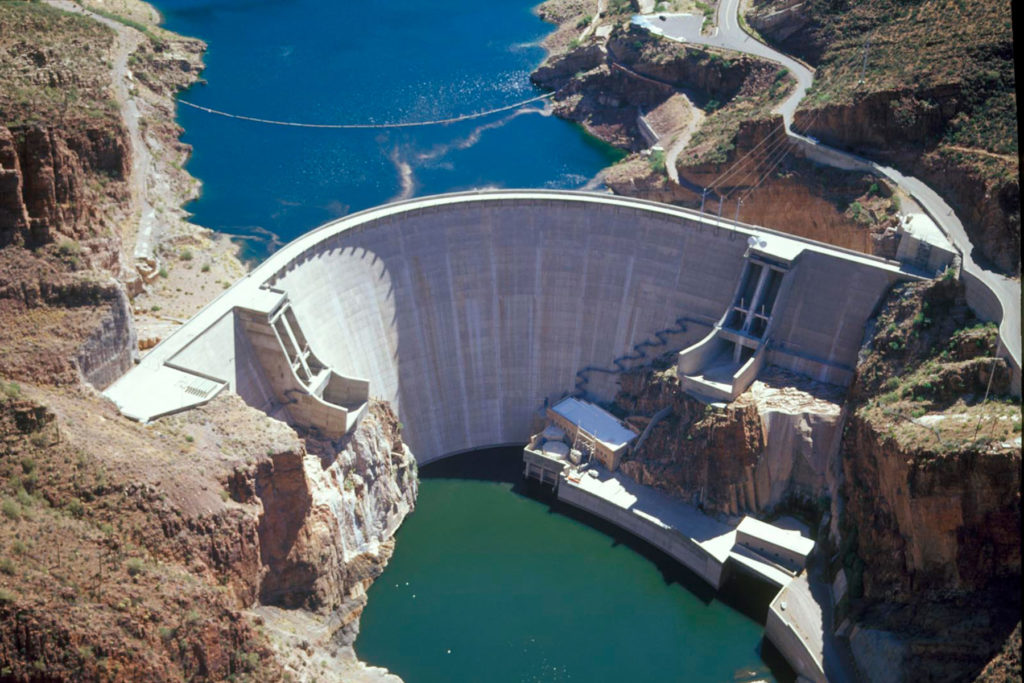
Lakes and Ponds
Much like our state’s rivers and streams, Arizona’s lakes and ponds vary greatly in size but all play an out-sized role in their surrounding ecosystems. Arizona hosts about 492 square miles of lakes and ponds, mostly in man-made reservoirs like Lake Powell and Lakes Meade. The need to manage our water supply is part of our state’s history but it’s come at great expense to aquatic wildlife communities. Dams and other water management practices have altered temperature and flow regimes while invasive species threaten the sensitive native fish that are endemic to Arizona’s waterways. Only two natural lakes occur in Arizona, Morman Lake and Stoneman Lake. Meanwhile, hundreds of other artificial impoundments are scattered throughout the state, from stock tanks that provide water for wildlife in remote areas to small urban parks that create an oasis for birds and other wildlife. Some species frequenting lakes and ponds include Ridgway’s Rail, Black Rail, Southwestern Willow Flycatcher, Western Yellow-billed Cuckoo, Western Grebe, Clark’s Grebe, Bald Eagle, Ruddy Duck, Common Yellowthroat, and Peregrine Falcon.
